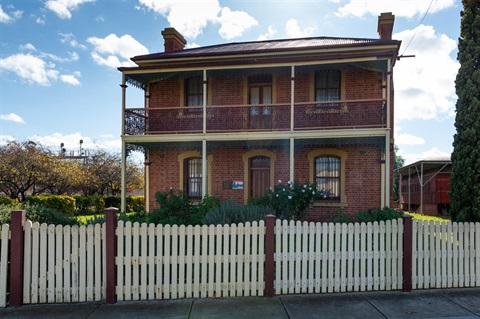History and Heritage

The Early Days
The ‘Oasis of the Riverina’ was once the home and hunting ground for the Wiradjuri indigenous people. The area around present day Culcairn was not known by Europeans until November 1824, when Hume and Hovell passed through the area. The second important journey of exploration was made in 1836, when Major Thomas Mitchell, on returning to Sydney from Portland, crossed the Murray River at Howlong and camped overnight on the Billabong Creek.
Pastoral settlement of the Culcairn district dates back to 1845 when Patrick Hill and James Creighton formed a sheep and cattle run, naming it Round Hill. Following a succession of owners, a transfer was made in 1874 from “Henty and Neil” to James Balfour, the founder of Culcairn. Culcairn is named after a large property in the former Shire of Kiltearn, north of Inverness in Scotland and the birthplace of Balfour’s mother.
Railway
In 1878 plans began for the construction of the railway line between Wagga Wagga and Albury, and the decision was taken to develop a number of towns along its route including Henty, Culcairn and Gerogery. In September 1880 the first train operated from what is now Culcairn, then known as Round Hill. The Station House (now a public museum) was built in 1882, and the town began to develop to what it is today. Culcairn became a ‘hub’ of the railway system with lines going to Holbrook and Corowa by 1892. In 1915 there were 15 railway staff employed in Culcairn.
Town Expansion and Development
One of the major landmarks of the town is the heritage listed Culcairn Hotel built in 1891. Originally single story, it was extended in 1910 with the addition of a second story, and an accommodation wing on the southern side (no longer there). In its heyday the hotel had over 70 rooms. People were able to drive their coach or horse to Culcairn and stable it there while they caught the train to Sydney or Melbourne. Passengers dined and stayed at the hotel, which was also the source of the town’s first power supply in 1909.
The Abikhair shops were built in 1903. By 1905 there were two blacksmiths operating in town. The impressive row of heritage listed shops in Railway Parade was built by the owner of the Hotel, Mr Scholz, between 1908 and 1910.
Further development of Culcairn was halted by the outbreak of World War I, however, from the 1920s on, growth gained a new momentum. From 1926 the quest for a permanent water supply increased, and by 1932 a well had been sunk successfully and water was piped for the town supply.
Today
Referred to as ‘The Oasis of the Riverina’, Culcairn today is a busy agricultural centre which is enhanced by its heritage buildings, such as the Culcairn Hotel, Memorial Hall, Court House, Railway Station and Station House. The town provides visitors with a range of recreation facilities with football, tennis and netball courts, public swimming pool, golf course, lawn bowls, cricket facilities, skate park and walking and bicycle tracks along with licensed clubs and picturesque parks and gardens.
Culcairn is also the birthplace of multiple Olympic gold medallist, equestrian Andrew Hoy.